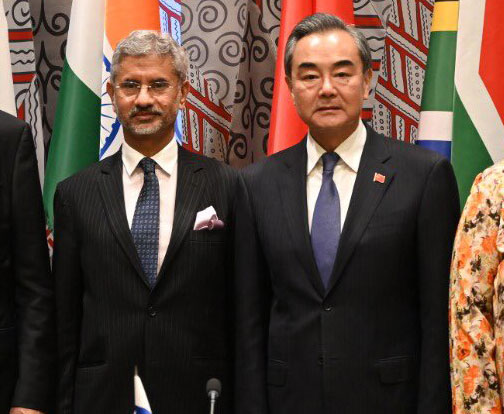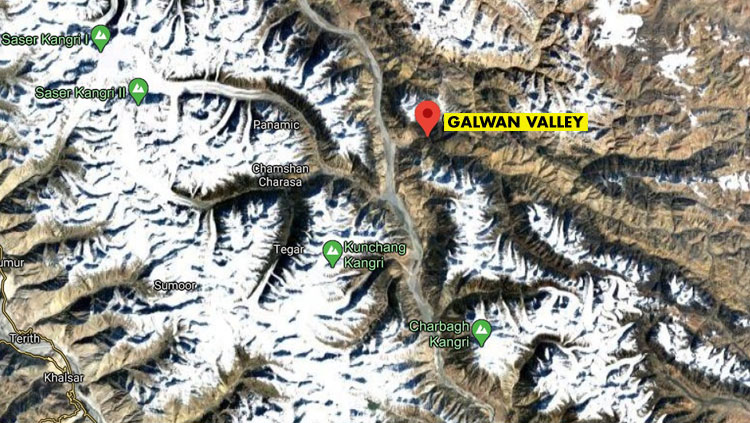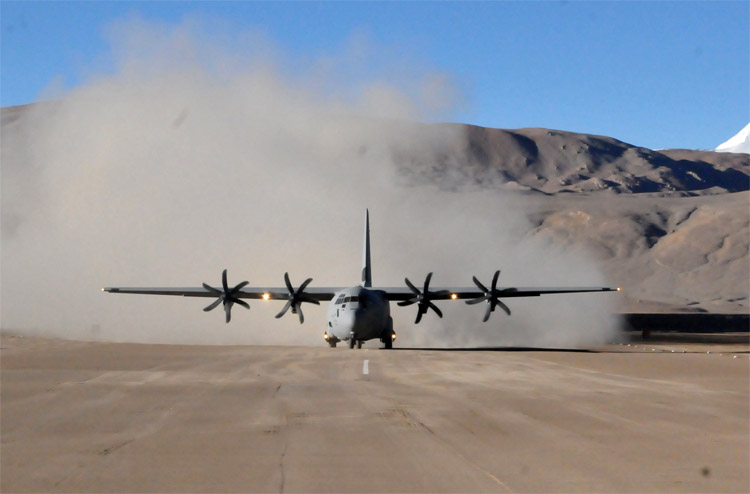INDIAN ARMED FORCES CHIEFS ON OUR RELENTLESS AND FOCUSED PUBLISHING EFFORTS

The insightful articles, inspiring narrations and analytical perspectives presented by the Editorial Team, establish an alluring connect with the reader. My compliments and best wishes to SP Guide Publications.

"Over the past 60 years, the growth of SP Guide Publications has mirrored the rising stature of Indian Navy. Its well-researched and informative magazines on Defence and Aerospace sector have served to shape an educated opinion of our military personnel, policy makers and the public alike. I wish SP's Publication team continued success, fair winds and following seas in all future endeavour!"

Since, its inception in 1964, SP Guide Publications has consistently demonstrated commitment to high-quality journalism in the aerospace and defence sectors, earning a well-deserved reputation as Asia's largest media house in this domain. I wish SP Guide Publications continued success in its pursuit of excellence.
- Prime Minister Modi Visits Punjab’s Adampur Air Base, Interacts with Airmen after Successful ‘Operation Sindoor’; Stern Message to Pakistan
- The layered Air Defence systems that worked superbly, the key element of Operation Sindoor
- Operation Sindoor | Day 2 DGMOs Briefing
- Operation Sindoor: Resolute yet Restrained
- India's Operation Sindoor Sends a Clear Message to Terror and the World – ‘ZERO TOLERANCE’
- Japan and India set forth a defence cooperation consultancy framework, talks on tank and jet engines
Beijing’s Continued Logjam
 |
The Author is Former Director General of Information Systems and A Special Forces Veteran, Indian Army |

The Seventh Corps Commander level India-China talks at Chushul on October 12 remained largely inconclusive as expected. The joint statement as reported in Chinese media had similar diplomatic scripts as earlier saying, “The two sides had a sincere and in-depth exchange of views and enhanced understanding of each other’s positions on the disengagement of their front-line troops along the area of Line of Actual Control in the western sector of the India-China border”. Both sides viewed the meeting positive and constructive, and agreed to earnestly implement the important understandings reached by the leaders of the two countries, not turn differences into disputes, and jointly safeguard peace and tranquility in the border areas.
Both nations have agreed to maintain dialogue and communication through military and diplomatic channels, and arrive at a fair, reasonable and mutually acceptable solution to disengagement as early as possible. Media had reported Chinese side would also have a diplomat. Whether one came from Beijing or a local political commissar attended is not known. The joint statement did not mention the Chinese aggression and intrusions. This was expected since India has avoided such reference from the beginning, which was used by China to brand India the aggressor.
Zhao Lijian, China’s foreign ministry spokesman has blamed upgradation of border infrastructure by India as the "root cause" of tensions and warned the move could aggravate the situation between the two countries. Lijian also said India has been increasing troop deployment along the border which has exacerbated tensions. China does not recognise the new union territory of Ladakh which he said was "illegally" established by India. He added China does not recognise Arunachal Pradesh as part of India either. These statements are to divert attention from China’s aggression and President Xi Jinping’s plans to dominate the world using every possible means. India has told China repeatedly not to interfere in India’s internal matters including Ladakh and Arunachal Pradesh, which are integral parts of India.
External Affairs Minister S. Jaishankar has said that the violent clashes on the India-China border in June had a very deep public and political impact and has left the relationship ‘profoundly disturbed’. He referred to multiple agreements since 1993 that created the framework for peace and tranquility, which limited the military forces that came to the border areas. Replying to a question on the Chinese aggression, Jaishankar said, “I haven’t frankly got any reasonable explanation that I can tell myself from them on this matter. There are today a very large number of troops with weapons concentrated on that segment of the border and that is obviously a very critical security challenge that we face.”

India has called for complete disengagement along the LAC but would PLA revert to its April 2020 positions is the question. Current PLA intrusions in Eastern Ladakh are along the north bank of Pangong Lake, in area of Gogra-Hot Springs and a 20 km deep intrusion in area of Y-Junction in Depsang plains where some 12,000 PLA troops are deployed. China also claims entire Galwan Valley. China would want India to vacate the heights occupied south of Pangong Lake, an area of Chushul and Kailash Range dominating all areas up to the Spangur Gap. India has remained firm on its demand for an early and complete disengagement of troops by China from all the friction points in eastern Ladakh. According to EAM Jaishankar, India and China are engaged in talks to resolve the border standoff and what is going on is “something confidential” between the two sides. Asked specifically about the outcome of the ongoing talks during an online conclave he replied the “discussions are going on and it is a work in progress.”
A news report of October 15, quoting an official, states that China has proposed reducing tensions by moving back forward elements like armoured units deployed by both sides at strategic locations like the Spanggur gap in Chushul. Moving back of tanks by both sides from key friction areas would lead to a significant reduction of tension at the LAC. The Indian side has made it clear that in the sequencing of the withdrawal, moving out troops from heights near the southern bank of the Pangong Tso, which are under Indian control, will come last. The China Study Group is reportedly studying the Chinese proposal.
In the above context, it would be prudent to remember: our airstrips at Chushul and Daulat Beg Oldi (DBO) are prime objectives of China; China is proposing armour pull back from Spanggur Gap but the first priority must be PLA armour and troops from Depsang, and India vacating heights occupied south of Pangong Lake, in area of Chushul and Kailash Range dominating all areas up to the Spanggur Gap will be monumental blunder. Do we still need proof of China’s backstabbing? These heights can be occupied by the PLA in bad weather conditions when surveillance and monitoring systems become ineffective.

Multiple activities point to PLA consolidating its positions in Eastern Ladakh. The mere fact that PLA has deployed some 12,000 troops in Depsang indicates China has no intentions to withdraw and plans to force the intrusions as the new LAC. Intelligence reports reveal China has signed a deal to procure special tents worth about three billion for PLA troops deployed in Ladakh during winter. Visiting a military base in Guangdong on October 13, Xi Jinping asked Chinese troops to put their minds and energy on preparing for war and maintain a state of high alert. News reports of October 17 indicate the PLA has recently conducted live-fire test training exercises with truck-based multiple rocket-propelled mine launchers at a high altitude at an elevation of more than 4,300 meters. There are signs of PLA suffering large number of weather-high altitude casualties in Eastern Ladakh but that would be of little bother to China’s political leadership.
China has been practicing war on multiple fronts. The current PLA intrusion in Depsang is in the same area where PLA had made a 19-km deep intrusion in 2013 (after Xi came to power) and stayed put for three weeks before withdrawing. Since 2014, Xi rehearsed the PLA on a life-sized land model of Ladakh inside China. Should Xi opt for limited war, it would endeavour to ‘paralyse’ the opponents employing algorithmic warfare in the opening round followed by intense bombardment, precision guided and loitering munitions, EMP bombs and swarm drones to minimise the Indian response. Finally, there is little doubt India will give a bloody nose to China.





